As an Amazon Associate I earn from qualifying purchases.
Have you ever gazed into the soulful eyes of your canine companion and felt a surge of inspiration to capture their essence on paper? Dog drawing, at its heart, is about connecting with the spirited nature of our furry friends. It’s a celebration of the bond between pet and owner, an artistic quest to immortalize their quirks and affection in pet portraits. Whether you’re an experienced artist or just starting, you understand that each stroke of the pencil has the power to bring your beloved pet’s personality to life. Through animal art, we share their stories, their loyalty, and their unconditional love—a tribute to the paws that pad softly into our lives and the pawprints they leave on our hearts.
Key Takeaways
- Discover the joy of capturing your pet’s unique personality through dog drawing.
- Learn essential techniques to make your pet portraits memorable and emotionally resonant.
- Uncover the secrets to mastering the art of canine illustration, from playful to profound.
- Embrace the emotional connection that animal art fosters between artists, pets, and viewers.
- Begin your journey towards creating art that celebrates the special bond between you and your pet.
Exploring the Basics of Dog Drawing
Starting your journey into canine portraiture may seem daunting, but it all begins with a deep appreciation for dog anatomy and investing in quality drawing materials. The secret to mastering this art form is building your illustrations from basic shapes and understanding how each segment works harmoniously to create a lifelike representation of man’s best friend.
Understanding Dog Anatomy
Accurate depictions of dogs require familiarity with their skeletal structure, muscle placement, and characteristic proportions. Whether you’re crafting the sturdiness of a Bulldog or the elegance of a Saluki, a strong grasp of anatomy is crucial. This knowledge allows you to capture the nuances that make each breed unique and your artwork convincing.
Choosing the Right Drawing Materials
From the soft lead of a pencil for shading to the fine tip of an ink pen for crisp outlines, each tool plays a pivotal role in bringing your dog to life on paper. Exploring a variety of mediums can also add richness and depth to your work, whether it’s through the use of charcoal for texture or watercolors for a splash of personality.
Sketching Basic Shapes and Forms
Begin your drawing by piecing together the dog’s form with geometric shapes, establishing an accurate framework before adding details. Circles and ovals can represent the head and body, while lines and rectangles help to form limbs and tails. This structural approach simplifies the complex figure of a dog into manageable parts, laying the groundwork for a more refined drawing.
Techniques for Realistic Dog Sketches
Embarking on a realistic sketch of a dog requires keen observation and masterful artistry. As you set out to capture the very essence of man’s best friend in your drawings, let’s delve into the techniques that will breathe life into your artwork. The fusion of shading, texturing, and detailing to portray those expressive eyes is key to creating not just a drawing, but a living presence on your canvas.
Creating Depth with Shading
Shading is the cornerstone of realistic sketches, giving form and depth to your subject. It’s not just about making certain areas darker; it’s about understanding the play of light and shadow on the dog’s form. Make use of shading techniques to suggest the roundness of limbs, the softness of the belly, and the gentle curves at the nap of the neck. Whether you opt for smooth blending or a textured approach, shading will turn a flat drawing into a three-dimensional wonder.
Depicting Fur Texture
The allure of a dog’s fur is in its richness and variety. Depicting fur texture is a play of precision and randomness—strokes of varying lengths, directions, and tones amalgamate to form a believable coat. Take your cues from the breed’s characteristics; the silkiness of a spaniel, the wiry touch of a terrier, or the dense fluff of a husky. Short, deliberate strokes can be used for short-haired breeds, while longer, flowing lines are needed to portray the lush manes of longer-haired companions.
Capturing Expressive Dog Eyes
The saying goes that the eyes are the windows to the soul, and this holds no less true for animals. The challenge is to capture expressive eyes that reflect the dog’s personality. Observe the shape, the glossiness, and the way light creates sparkle and shadows within. Pay attention to the tiny details—the delicate gradations in color, reflections, and the hint of a catchlight to bring forth a gaze that’s strikingly alive, conveying loyalty, mischief, or boundless joy.
Each of these elements, from shading to the shimmer of eyes, works in concert to portray a realistic, lovable creature that’s truly more than just a sketch. Your commitment to these techniques shows respect and care for your furry subjects—a portrayal of life on paper.
Step-by-Step Guide to Drawing a Dog’s Face
Drawing a pet portrait requires a keen eye for detail and an understanding of a dog’s features. Canine illustration is not just about replicating what you see; it’s about interpreting and emphasizing the characteristics that make each dog unique. Here’s a step-by-step guide to help you capture the essence of your furry subject accurately.
- Observe Your Subject
Begin by studying the dog’s face you’re about to draw. Note the shape of the head, the placement of the eyes, and any distinguishing features like scars or spots. - Start With Basic Shapes
Sketch out basic shapes to form the foundation of the face. Use circles for the head, add ovals for the muzzle, and triangles for the ears. - Refine Your Sketch
Gradually refine your shapes, defining the outline of the face. Pay special attention to the curves of the cheeks and the jawline. - Add the Eyes, Nose, and Mouth
Position the eyes correctly, ensuring they reflect the dog’s character. Sketch the nose and mouth, accurately depicting the dog’s expression. - Detailing the Fur
Use short strokes to simulate the texture of the fur. Observe the direction in which the fur grows and use this to guide your pencil strokes. - Shading and Tonal Values
Add depth with shading, highlighting areas where the light naturally hits and creating shadows to define the facial structure. - Final Touches
Review your drawing and add any final details. Enhance the eyes or fur as needed and make sure all features are well proportioned.
Seizing the personality in a pet portrait is all about the subtleties. Take your time with each step, ensuring your canine illustration conveys the spirit and likeness of the pet. With practice, each portrait will become a lasting testament to the bond between dogs and their owners.
Perfecting the Canine Silhouette
Mastering the depiction of the canine silhouette tests your understanding of dog body proportions while considering the vast diversity among dog breeds. A blend of precision and artistry, the task requires a balance between scientific accuracy and the fluidity of animal art.
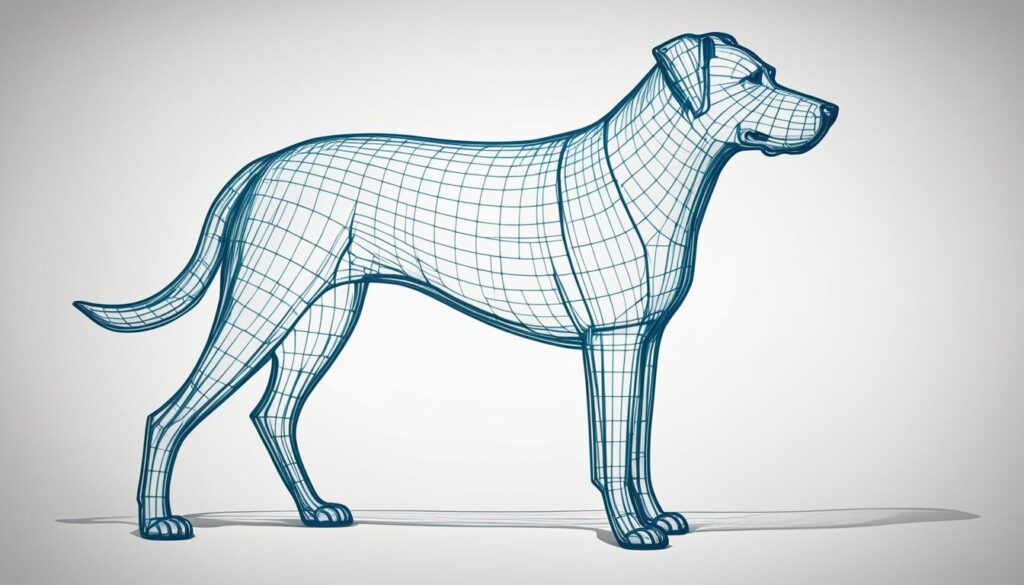
Crafting Accurate Dog Body Proportions
To truly capture the essence of a dog, you begin with the fundamentals: body proportions. Each breed bears unique characteristics ranging from the length of their legs to the depth of their chest. By understanding these nuances, your illustrations can vividly represent the physical traits of your subject.
Drawing Different Dog Breeds
A Labrador Retriever’s silhouette vastly differs from that of a Greyhound. It’s this diversity in forms and sizes that adds richness to the animal art world. Let’s explore how different breeds vary and how to portray these differences accurately on the canvas.
| Breed | Characteristic | Proportion Tip |
|---|---|---|
| Beagle | Compact body | Keep the body length roughly equal to height |
| Boxer | Powerful build | Emphasize the broad chest and strong, muscular limbs |
| Dachshund | Long torso | Accentuate the length and shortness of legs to depict its uniqueness |
| Great Dane | Tall stature | Use longer lines to express the breed’s grandness and elegance |
Posing and Movement Tips
The posture and movement of a dog can communicate much about its mood and energy. Study the dynamic poses and learn to freeze the momentum in your sketches, bringing life to the still image. Here, let’s look at some pointers on capturing the thrill of movement in your drawings.
- Note the natural stance of each breed to represent their disposition correctly.
- Observe the flow of muscles and the direction of fur during movement.
- Practice quick sketches to get a feel for the dog’s fluid motion.
Incorporating Emotion into Your Dog Drawing
When you begin an expressive dog drawing, you’re not just sketching a pet; you’re capturing a cherished animal in a moment of time, reflecting its character and emotion. It’s a delicate dance between your artistic skills and the almost lifelike spirit on paper. To convey the true essence of your furry friend, you must tap into the subtleties that animate their personality.
Focusing on the pet’s eyes can reveal a spectrum of emotions, from the spark of curiosity to the glassy stare of contentment. You’ll often find that the eyes are the gateway to infusing emotion into your animal art. Here are some aspects to consider for an authentically expressive creation:
- The set and shape of the eyebrows can indicate everything from eagerness to relaxation.
- Light and shadow play a significant role in creating depth, suggesting a three-dimensional presence filled with life.
- The tension or relaxation in the jaw and position of the ears adjust the perceived mood of the drawing.
As you hone in on these fine details, your drawing transcends from being a mere representation to becoming a story about your subject. It’s in these nuances that each pet’s unique charm becomes apparent, allowing viewers to feel a connection with the animal portrayed in your drawing. Keep practicing, and soon your drawings will not just capture the likeness but also the soul of your canine companions.
Creative Ideas for Cute Dog Drawings
Submerge yourself in the whimsical world of cute dog drawings, where every stroke adds charm and persona to your artistic creations. Whether you’re a seasoned artist or a newcomer to the world of pet portraiture, these tips will help you infuse life and playfulness into your sketches, attracting the adoration of art enthusiasts and dog lovers alike. So grab your pencils and let your imagination off the leash!
Adding Character to Your Dog Portraits
Character is the essence of a personal and relatable pet portrait. Think about the cheeky tilt of the head or the peculiar twinkle in the eye—these are the details that transform a simple drawing into a portrayal teeming with life. To capture the essence of your furry subject, observe those idiosyncratic quirks and use them as a highlight in your art.
Experimenting with Cartoon Styles
For those looking to inject some humor and fantasy into their work, cartoon dog styles offer an avenue for creative expression. With exaggerated features and humorous expressions, cartoon renditions can capture personalities in a way that’s uniquely different from realist techniques. Explore the vast array of styles, from classic comic strips to contemporary digital designs, and find one that resonates with your creative pulse.
Using Color to Bring Your Drawings to Life
Vibrancy in art can evoke emotions and tell stories, and the same principle applies to colorful dog art. Steer away from the traditional browns and blacks, and dare to incorporate bold and unconventional hues into your palette. A splash of vibrant color can convey the mood you wish to depict, be it a serene blue for a calm companion or a radiant red for an energetic puppy.
Developing Your Own Style in Canine Illustration
As you delve deeper into the world of canine illustration, the ultimate goal is for your artwork to reflect a unique, personal flair—a distinct art signature that sets you apart. Achieving this does not happen overnight. Instead, it’s cultivated through a fusion of inspiration, technique, and self-expression.
Finding Inspiration for Your Art
Seeking inspiration is the spark that ignites an artistic style. You might find yourself mesmerized by the works of others, but remember, the essence of inspiration is to evolve these influences into something that’s unmistakably yours. Nature, music, literature, and even the personality of pets can all serve as muses for your artistic journey.
Melding Realism with Your Artistic Flair
Assimilating realism into your art does not mean abandoning your creative impulses. Quite the contrary, it invites an intimate dance between the anatomical precision of your canine subjects and the imaginative strokes of your brush or pencil. This melding is where your signature style begins to emerge, crafting a blend that resonates with both your vision and reality.
Signature Touches That Make Your Dog Drawing Stand Out
Identifying and consistently applying your signature touches are key to being recognized in the art world. Whether it’s a peculiar way you illustrate the sparkle in a dog’s eye or an unconventional color palette that breathes life into your sketches, these are the hallmarks of your artistic identity. They aren’t just stylistic choices; they are your brand.
| Element of Style | How It Enhances Your Canine Illustrations | Examples |
|---|---|---|
| Color Selection | Adds emotional undertones and vibrancy | Using pastel hues for a gentle, calming effect |
| Line Work | Defines form and injects movement | Expressive, gestural lines suggesting agility and life |
| Texture Technique | Conveys the tactile nature of fur | Stippling to mimic coarse or soft fur textures |
| Perspective and Composition | Guides viewer’s focus and tells a story | Dynamic angles showcasing the dog’s temperament |
| Application of Light and Shadow | Creates depth and realism | Strong contrasts for dramatic effect or soft shading for subtlety |
Embrace the journey of developing your artistic style in canine illustration. Let every brushstroke and pencil line be a testament to your commitment to both accuracy and artistry. As your skills and confidence grow, so too will the recognition of your work’s distinct art signature.
Professional Tips for Capturing Pet Personalities
Transforming a simple pet portrait into a vivid reflection of a dog’s unique character requires a blend of artistic skill and keen observation. When it comes to creating custom pet portraits, capturing the essence of a dog’s personality is as essential as getting their physical traits right. Whether you’re an experienced artist or just starting out, these professional tips will guide you through the process of bringing your furry subject’s persona to life on paper or canvas.
Interpreting a Dog’s Character
Each dog has its particular quirks and idiosyncrasies that pet owners adore. To identify these traits, spend time with the dog you’re drawing, if possible. Notice how they interact with their surroundings and people. Do they have a protective stance, a playful bounce, or a serene composure? These observations will help you infuse your artwork with true personality and charm, a hallmark of a heartfelt pet portrait.
Observational Techniques for Lively Portraits
Attentive observation is key in portraying the liveliness of a pet. Watch for the subtleties in expression—how their ears perk up when attentive or the tilt of the head when curious. Capture the sparkle in their eyes, a key element in conveying the spirit of a dog’s personality. It’s these details that will make your artwork resonate with authenticity and emotion.
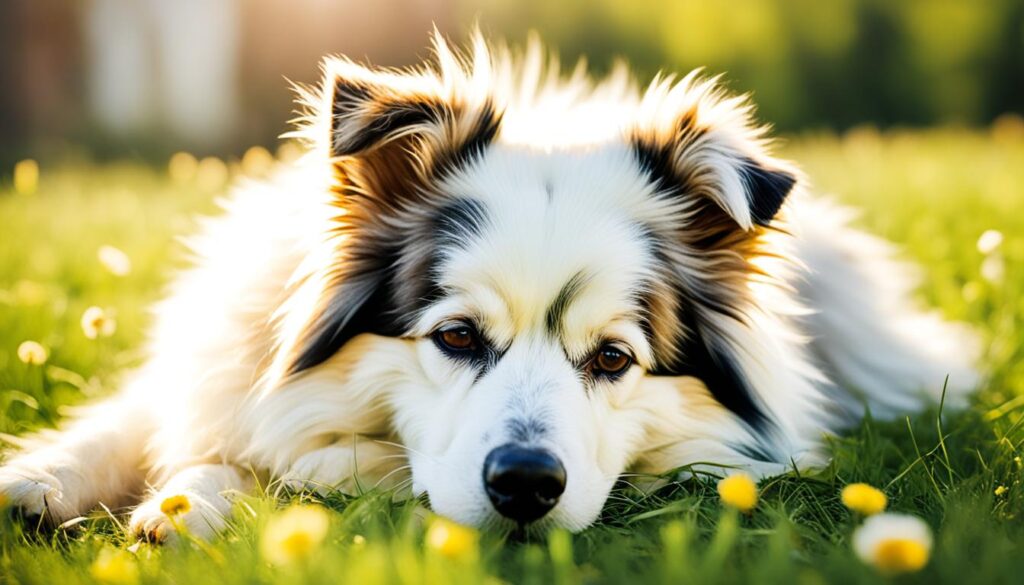
Communicating With Pet Owners for Custom Portraits
Creating a custom pet portrait goes beyond your perception; it’s also about understanding how pet owners see their beloved companions. Engage in a dialogue with them, collect stories, and perhaps even their favorite photos for reference. This collaboration ensures that your art not only captures the pet’s likeness but also the bond and special moments treasured by the owner.
| Characteristic | Observation | Artistic Interpretation |
|---|---|---|
| Playfulness | Dog’s energetic playing with toys | Vibrant lines and spirited stance |
| Serenity | Calm resting posture | Soft shading and gentle expressions |
| Loyalty | Alert stance when owner is near | Strong outlines and protective gaze |
| Curiosity | Perked ears and head tilt | Dynamic angles and inquisitive eyes |
Capturing the heart and soul of pets in art is not just a matter of technical skill, but also an emotional journey. By following these insights from professional artists, your custom pet portraits will become treasured keepsakes, immortalizing the beloved dog personalities for years to come.
Transitioning from Sketches to Finished Dog Art Prints
Turning a realistic sketch into a sublime piece of dog art prints is both an exciting and meticulous process. It begins with a critical appraisal of your sketch, pinpointing areas that need to be enhanced or refined. Whether you are preparing your artwork for a gallery, a client, or personal display, this stage is crucial in ensuring the highest quality of the final print.
Next, you need to consider the mediums and materials that will best convey the original charm of your sketch. This choice can dramatically affect the texture, color fidelity, and overall impression of your finished prints. Here’s a comprehensive look at some of the most popular printing mediums and their key attributes:
| Medium | Texture | Color Fidelity | Suitability |
|---|---|---|---|
| Giclée Print | Smooth or Canvas-like | High | Gallery and Museum-Quality Reproductions |
| Lithography | Slightly Textured | Varies with technique | Bulk Reproductions with Authentic Feel |
| Digital Printing | Varied (Paper dependent) | Good to Excellent | Cost-Effective and Versatile |
| Screen Printing | Textured and Handmade Quality | Bold and Vibrant | Limited Editions and Artistic Projects |
After finalizing your printing medium, the last step involves the touch-up phase. This could mean cleaning up the background, enhancing contrasts, or sharpening the details to ensure that every inch of your dog art print radiates the essence of your original realistic sketch. With these steps in mind, you’re now ready to bring your dog sketches to life and share them with the world as sophisticated art prints.
Digital Tools and Apps for Dog Drawing
Embarking on the journey of digital dog drawing opens up a world of creative potential. With sophisticated digital art tools at your fingertips, you have the opportunity to transform your visions of man’s best friend into digital masterpieces. The right software can help you navigate complex techniques with ease, and the finest digital brushes bring your animal’s fur to life with stunning realism.
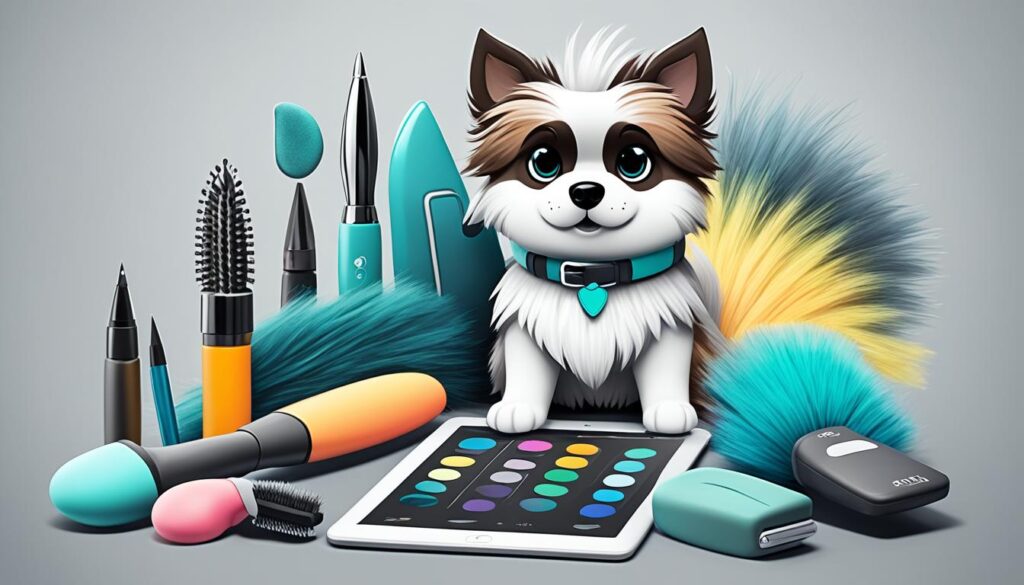
Navigating Software for Digital Artists
Choosing the right software is crucial for digital artists aiming to perfect the art of dog drawing. Whether you are a beginner or a seasoned professional, software options range from user-friendly to those with intricate features that allow for detailed work. Look for programs that offer layer support, customizable brush settings, and an intuitive interface to enhance your digital canvas.
Picking the Best Digital Brushes for Fur
No digital dog portrait is complete without the lifelike texture of fur. The key is selecting digital brushes designed for painting fur and hair, which can mimic the natural flow and direction of your dog’s coat. Experiment with different brush styles and settings to achieve the desired depth and softness that will bring your digital dog drawing to life.
Turning Digital Creations into Physical Art
Once your digital artwork is complete, the next step is to bring it into the physical world. There are multiple methods for printing your digital dog drawings onto various mediums, from high-quality paper to canvas, all which can affect the final look and feel of your artwork. Fine-tuning the print settings to suit the medium you choose will ensure that your digital art faithfully replicates the original digital vision.
| Feature | Software Recommendation | Brush Type for Fur | Print Medium |
|---|---|---|---|
| User Interface | Adobe Photoshop | Pattern Brushes | Fine Art Paper |
| Layer Support | Corel Painter | Stipple Brushes | Canvas |
| Brush Customization | Procreate | Hair Brushes | Matte Paper |
| Printing Options | Clip Studio Paint | Fan Brushes | Glossy Photo Paper |
Promoting and Selling Your Dog Drawing Art
In today’s digital ecosystem, carving a niche for your art requires not only talent but also smart promotion. By embracing the online space, you can turn your passion for pet portraits into a profitable venture. Establishing an online art portfolio, leveraging social media art promotion, and fostering pet lover community engagement are key to your success as a dog drawing artist.
Building an Online Portfolio
Your online art portfolio is the gateway to your world of canine creations. It’s where you showcase your skills, narrate your art journey, and ultimately, seduce viewers into becoming buyers. To stand out, ensure your portfolio is user-friendly, reflects your artistry, and resonates with your target audience—pet lovers. Implement SEO strategies to improve visibility and use high-quality images to make a lasting impression.
Using Social Media to Showcase Your Work
In the age of connectivity, social media platforms like Instagram and Pinterest are invaluable tools for artists. They offer free, powerful channels to promote your work to a global audience. Create engaging content that goes beyond showcasing your dog drawings; share behind-the-scenes looks, stories about your furry subjects, and even time-lapse videos of your art in progress to captivate your followers and encourage shares.
Engaging with the Pet Lover Community
Engagement is the currency of the social media world. By interacting with the pet lover community, you not only grow your follower base but also build relationships that can lead to loyal patrons. Participate in online forums, collaborate with pet influencers, and join events to stay connected. Listen to the community’s feedback to refine your art and offer personalized commissions that they simply cannot resist.
The Joy of Creating Custom Pet Portraits
Embarking on the creation of custom pet portraits is a journey filled with emotional rewards and professional triumphs. As an artist, you capture more than a pet’s physical appearance; you encapsulate their very essence, which brings immense joy to those who cherish them. The process of creating these portraits is not solely an artistic endeavor but also a way to forge deeper connections between pets and their owners.
The satisfaction derived from pet portrait satisfaction is multifold. There’s the sense of accomplishment in perfecting the likeness, the pleasure of seeing a pet owner’s reaction, and the pride that comes from knowing your artwork is a meaningful addition to someone’s life. Each stroke of your brush or pencil contributes to a lasting memory, a tribute to the beloved animal companion.
Understanding your audience is key when engaging in the creation of custom pet portraits. Pet owners look for artists who not only possess the technical skill but also empathize with their bond to their furry friends. By immersing yourself in each project, you show them that their pet’s story is just as important to you as it is to them.
There is something genuinely special in the gaze of a pet captured perfectly in art. It’s not just an image; it’s a keepsake of loyalty, love, and joy.
- Consultation: The first step involves a heart-to-heart with the pet owner to comprehend the unique characteristics of their companion.
- Creation: Next is the hands-on artistry, where every fur detail and playful glint is translated onto the canvas.
- Completion: The final reveal, where pet portrait satisfaction reaches its peak, and you witness the emotional connection solidified through your work.
Your role as an artist goes beyond the canvas; it becomes a medium through which stories of love and companionship are eternally preserved. Custom pet portraits are not just artworks; they’re heirlooms that celebrate and immortalize the profound bond between humans and their pets.
Conclusion
As we reach the animal art culmination of our shared journey through the artistry of dog drawing, it is evident that the pursuit of capturing our canine companions on paper has been an enriching experience. From the early stages of understanding dog anatomy to the complex process of infusing emotion and personality into your sketches, each step has helped you grow as an artist. The transition from basic lines and shapes to expressive, soulful creations reflects your dedication to the craft.
Dog drawing reflection is more than just an accumulation of techniques; it’s about the joy and satisfaction derived from creating works that resonate with fellow pet lovers. The feedback from those who cherish the likeness of their furry friends is a testament to the emotional connection and value embedded in each portrait. Your progress exemplifies the gratification that arises from enhancing your abilities and fostering connections through the medium of art.
Encouraged to continue honing your skills, remember that every stroke, every shade, and every detail brings you closer to the true essence of the subject. Whether you’re working on a personal project or creating custom pet portraits for others, the ongoing quest for improvement is what makes the world of animal art endlessly dynamic. Keep embracing new challenges, exploring different styles, and capturing the hearts of pets and people alike with your artistic talents.
FAQ
What are the essential tips for beginners to start drawing dogs?
How can I achieve realism in my dog sketches?
Can you guide me through drawing a dog’s face?
What’s crucial in perfecting the canine silhouette?
How can I infuse emotion into my dog drawings?
What are some creative ways to draw cute dogs?
How do I develop a unique style in canine illustration?
What are the professional tips for capturing a dog’s personality in portraits?
How can I transition my sketches into finished dog art prints?
What digital tools should I use for dog drawing, and how do I choose the right digital brushes?
How can I promote and sell my dog drawing art effectively?
What makes creating custom pet portraits a fulfilling experience?
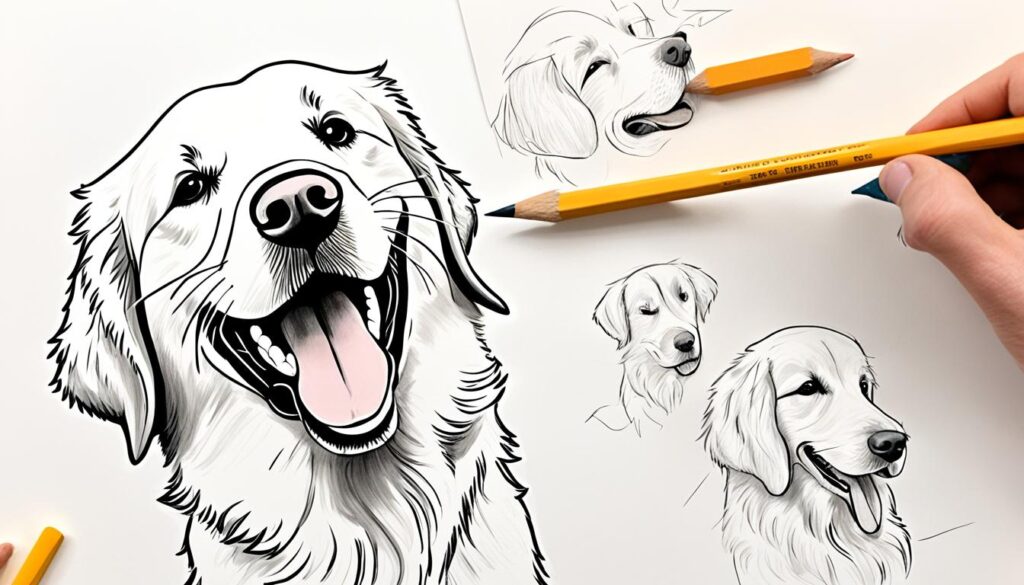
Master Dog Drawing Skills in Simple Steps
Artist Corner
As an Amazon Associate I earn from qualifying purchases.
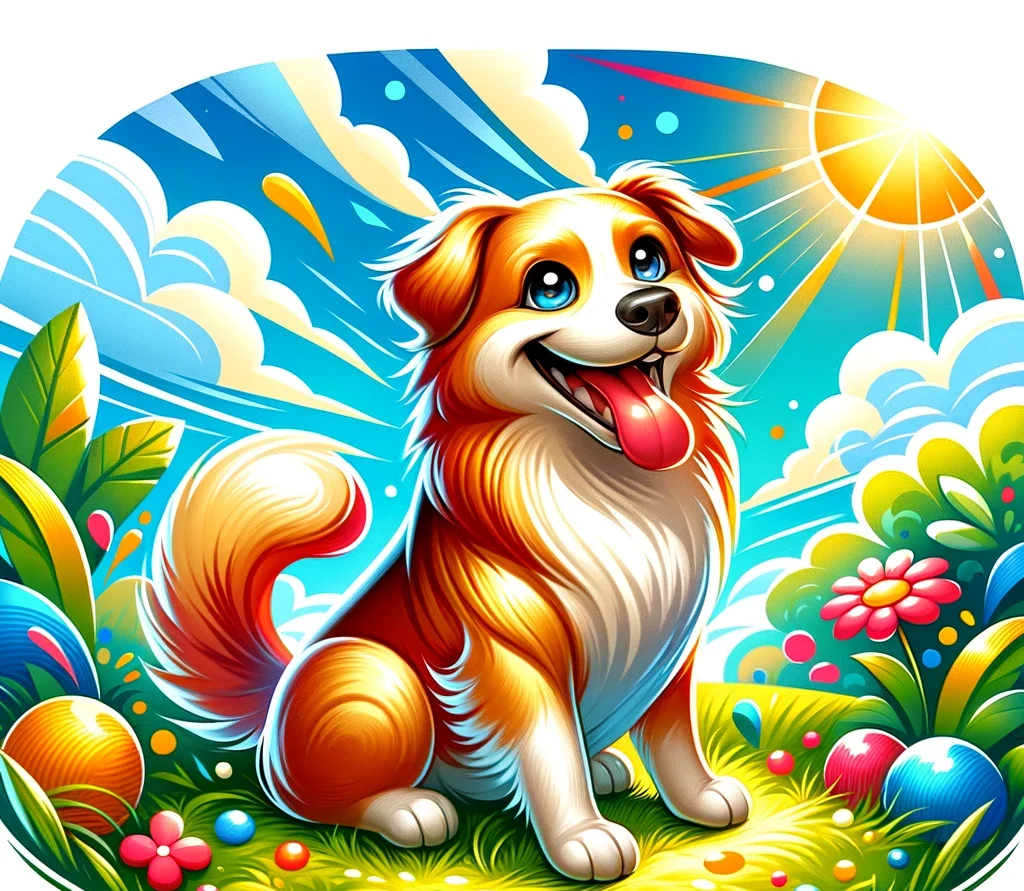
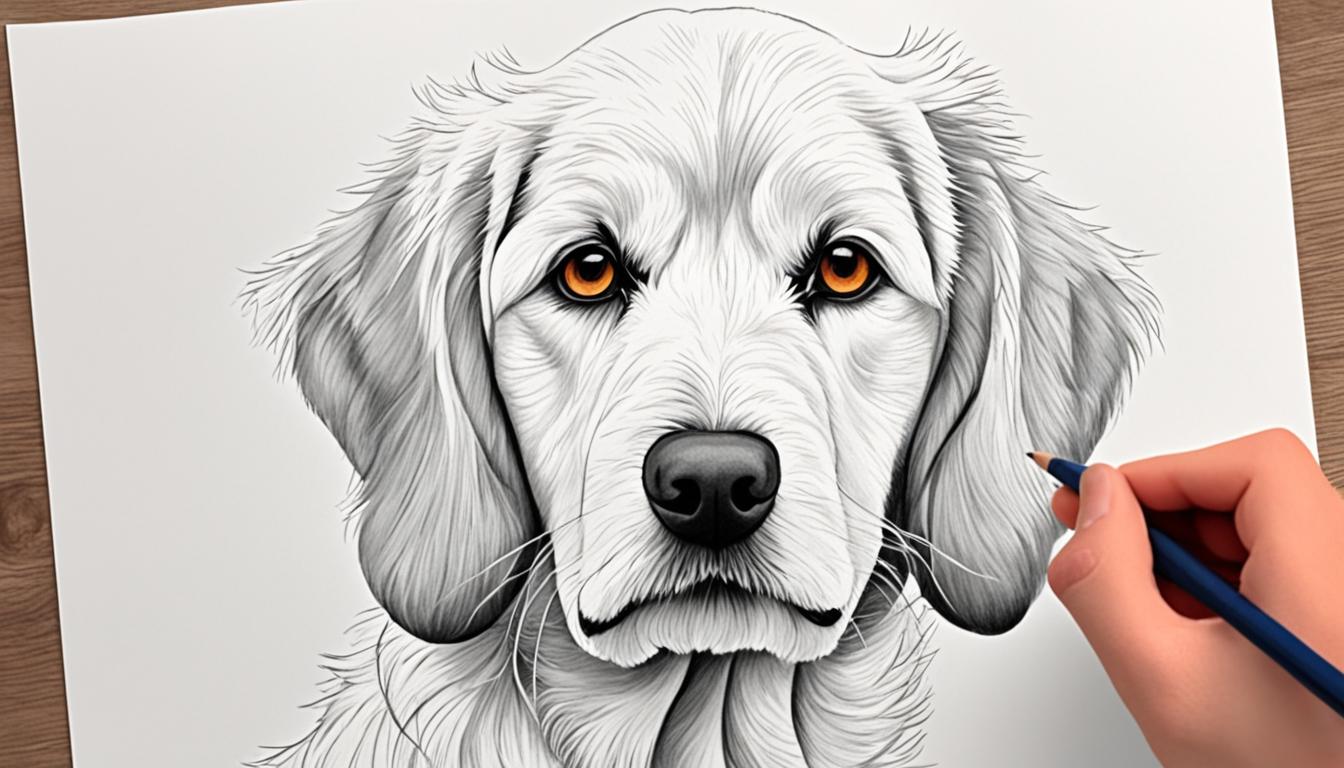
[…] Dog Drawing Tips for Pet Lovers & Artists […]